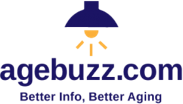It Takes Two: Protein + Strength Training = Muscle Maintenance
July 23, 2025

Aging in a way that allows you to stay strong and healthy involves a combination of essential factors: diet, exercise, sleep, social engagement, stress reduction – you know the drill by now. When it comes to strength, you also likely know that you have to put in the effort to reap the rewards. That is, you need to engage in regular strength training activities to sustain and build muscle, something critical if you want to remain mobile and independent for as long as possible. But there’s another side to sustaining and building muscle: That is, the nutrients you put into your body are also essential to maintaining muscle mass and, therefore, strength, as you get older. There are 3 primary components to your diet: carbohydrates, fats, and proteins. While each is necessary in some capacity to keep you healthy and energetic, the reality is that protein in particular is essential for muscle maintenance. As a recent article in The Washington Post bluntly stated, “The foods you choose are as important as exercise for getting and staying strong.” And when it comes to diet, nothing is more important for building and maintaining muscle than protein.
Experts seem to agree that despite the current buzz and interest in protein, most Americans likely take in sufficient protein each day to meet their physical needs. That is, most Americans, except older adults. In fact, your protein needs change as you get older, and because the body is less efficient in using protein as you age, you need to take in more protein the older you become. Furthermore, your body does not store protein the way it stores other nutrients, so you need sufficient protein intake every day, and preferably, at every meal. Without sufficient protein, you risk such problems as sarcopenia, falls with broken bones, and inadequate muscle mass to go about your daily activities like bathing, cleaning, or cooking. Estimates are that somewhere between 30 to 76 percent of older adults do not consume adequate protein. Moreover, in addition to upping your protein intake (recommendations are for a 1-2 palm-sized portion for each meal), you may also want to focus on the quality of protein you ingest, with the recommendation that proteins with greater leucine content are considered better if your goal is muscle growth. What foods might that mean? Beyond meat, which you may want to limit for other reasons, such as cardiac health, leucine can be found in such foods as fish, beans, nuts, and tofu. In fact, we now have solid evidence that plant protein sources can be as beneficial for muscle maintenance as animal protein sources. For more on the role of protein as one of the essential building blocks of muscle maintenance as you get older, scoop out some cottage cheese and read here.
Of course, nothing is more essential to making and maintaining muscles as you get older than strength training exercises. And while you may not be able to build visible muscles that rival younger bodybuilders, that doesn’t mean your efforts are not important or won’t pay off. In fact, as an expert made clear in a recent article in The Guardian, “You may not build as much visible muscle, but strength, cardiovascular health, brain function and protection against non-transmittable disease all improve.” If you’re in the market for a basic yet beneficial strength training routine that involves little equipment (other than some resistance bands) and doesn’t require you to get to a gym, put on some workout gear, and click here. Or, if you’re bored with the basics and want to try a new strength training routine, CNET recently promoted the low-impact, strength-building strategy of Essentrics, which can be streamed online and has been described as a combination of Tai Chi, ballet and physical therapy, improving muscle strength while preserving muscle mass and supporting balance and range of motion. Of course, the ladies from Yes2Next offer a wide range of strength-training workouts that you can also access online without charge.
Finally, in the not-too-distant future, your physician may begin to offer you an easy-to-implement test to assess just how fast your muscles are aging and whether you are at risk for sarcopenia, regardless of whether you have symptoms of muscle loss. A recent study published in the journal Aging reports that a new Muscle Age Acceleration tool is now being studied to help identify older adults who may benefit from added strength training or dietary efforts to delay or prevent sarcopenia by building more muscle. While the tool is not yet ready for prime time, it underscores how important it is to pay attention to diet and exercise in order to maintain your muscles as you age. For more on this research, read here.







